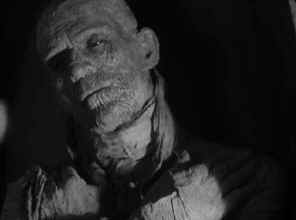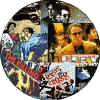|
Mummy,The1932(SE)/B+,B+ |
||
|
Universal/1932/74m/BW 1.33 |
||
|
In
1932 Universal continued its grip on movie horror with the
introduction of another franchise character, The Mummy.
Written directly for the screen, the highly romantic horror
movie depended more on character than special effects and shock.
Archeologists working on a significant Egyptian dig discover a sarcophagus containing
a centuries old mummy. An accompanying box found is emblazoned with
a warning against opening. One of the diggers cannot resist the
temptation and as he examines the contents of the box and translates
the scroll found inside, the words send a message deep into the
past, which awakens the mummified High Priest Imhotep to the present
in an elegantly simple reanimation sequence.
|
|
Check out the Movie
Poster Archive for short bios and images of Susan
Hayward, Kirk Douglas, Katharine Hepburn and many more. This month's
featured star is John
Wayne. The Feature
Archive has articles ranging from Akira
Kurosawa to Blonde
Bimbos and John
Ford. |
|
HOT
LINKS Classic
Movies
|
|
Home Theater Reference Reviewing System When you read a DVD review it's of utmost importance to know what equipment is being used to evaluate quality. Click on the projectors to find out more. |

